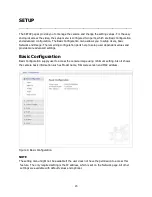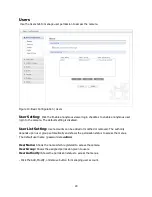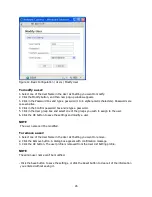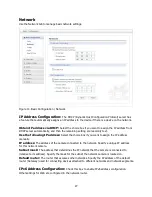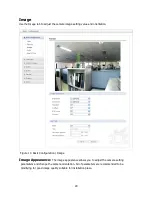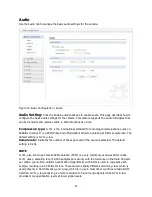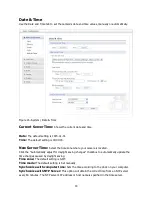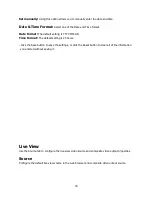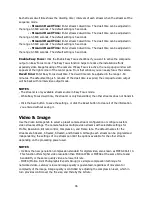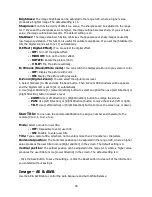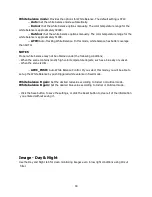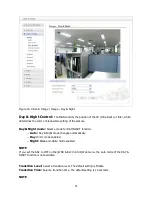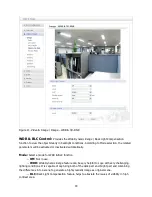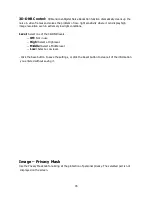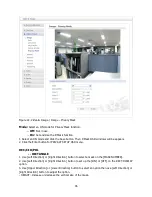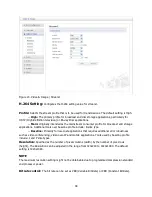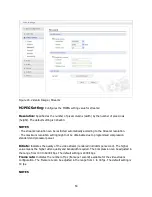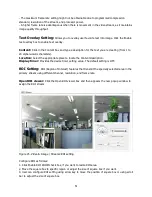
36
Each stream dwell time shows the dwelling time / intervals of each stream when the stream set the
sequence mode.
-- Stream1 Dwell Time:
Enter stream1 dwell time. The dwell time can be adjusted in
the range 3-3600 seconds. The default setting is 5 seconds.
-- Stream2 Dwell Time:
Enter stream2 dwell time. The dwell time can be adjusted in
the range 3-3600 seconds. The default setting is 5 seconds.
-- Stream3 Dwell Time:
Enter stream3 dwell time. The dwell time can be adjusted in
the range 3-3600 seconds. The default setting is 5 seconds.
-- Stream4 Dwell Time:
Enter stream4 dwell time. The dwell time can be adjusted in
the range 3-3600 seconds. The default setting is 5 seconds.
Enable Easy Focus:
Click the Enable Easy Focus checkbox if you want to active the composite
output on Easy Focus mode. The Easy Focus function helps to reduce the installation efforts
especially video image focusing of the camera. If Easy Focus is active, the new popup window will
appears at the right corner of the center pane. From that window you can easily focus the camera.
Dwell time:
Enter Easy Focus dwell time. The dwell time can be adjusted in the range 1-60
minutes. The default setting is 5 minutes. If the dwell time is expired, the composite video output
will be back with normal video output mode.
NOTES
- The stream1 is only available stream source in Easy Focus mode.
- While Easy Focus dwell time, the stream1 is only transmitted, the other streams does not transmit.
- Click the Save button to save the settings, or click the Reset button to clear all of the information
you entered without saving it.
Video & Image
Use the Video & Image tab to select a preset camera stream configuration or configure custom
video stream settings. The camera features multiple video streams with selectable settings for
Profile, Resolution, Bit rate control, Compression, and Frame rate. The default names for the
streams are Stream1, Stream2, Stream3, and Stream4. Although each stream can be programmed
independently, the settings of one stream can limit the options available for the other stream
depending on the processing power used.
NOTES
- H.264 is the new generation compression standard for digital video, also known as MPEG4 Part 10.
This function offers higher video resolution than Motion JPEG or MPEG4 at the same bit rate and
bandwidth, or the same quality video at a lower bit rate.
- MJPEG (Motion Joint Photographic Experts Group) is a simple compression technique for
networked video. Latency is low and image quality is guaranteed, regardless of movement or
complexity of the image. Image quality is controlled by adjusting the compression level, which in
turn provides control over the file size, and thereby the bit rate.


